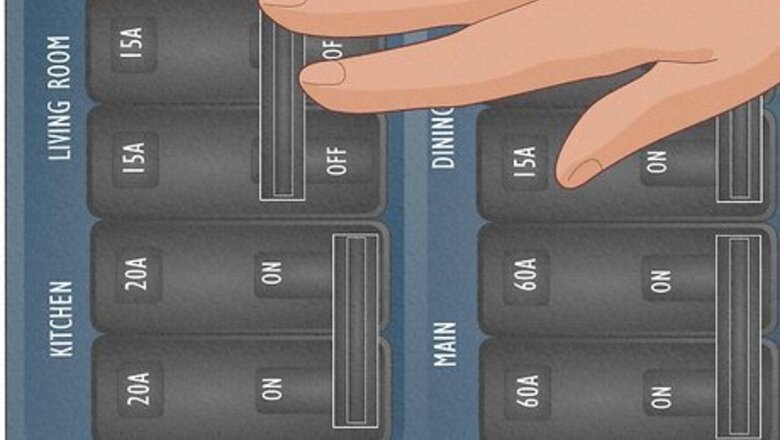
views
Removing Your Old Light

Cut power to your circuit. The best way to do this is by turning off the electricity supplied to the circuit on which you will be working at the junction box (also called a fuse box) for your home. Switch the breaker of your fuse-box so the fuse for the circuit supplying electricity to your fixture reads "Off." It's always a good idea to double-check the flow of electricity by checking the light itself before moving forward with this project. Flick the light on, and if the circuit has been disabled, the light should stay off.

Clean the old fixture and installation area. If the light you are wiring is in the ceiling, you should clean any cobwebs and dust before attempting to install your new fixture. The same is true for lights or switches in walls; a clean work area will improve your ease of installation. If you are using a ladder to reach your light fixture, or are in a less than ideal position, be sure the ground is also clear of debris or anything else that might affect your balance or safety.
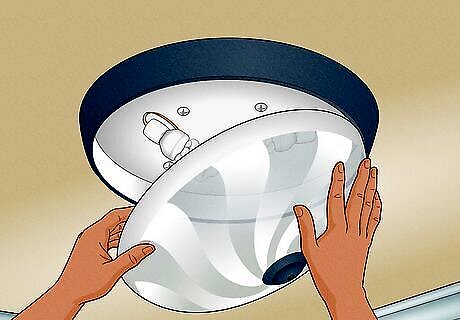
Remove the old fixture covering. There is usually, but not always, a decorative globe, shield, or some kind of external feature covering your existing light fixture. This could also be something more involved, like ceiling fan blades.

Unmount the fixture. There will be a mounting bracket holding your old fixture in place. You will need to unscrew this from mounting bracket, usually with Phillips-head screwdriver, and then pull it from the bracket. Be sure you support the old fixture with your hand as you unscrew it from the mount. If you do not support the fixture, it could fall to the floor once you loosen the screws holding it in.
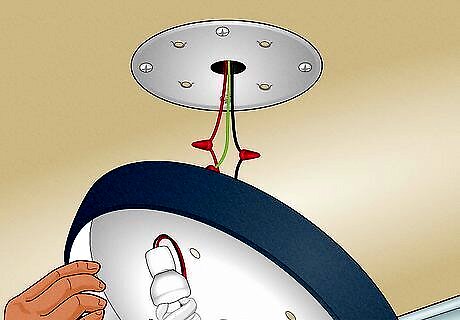
Lower the fixture. Allow the unscrewed fixture you are supporting with your hand to descend a few inches below its mount. You will likely see three wires attached to your fixture: a hot wire, grounding wire, and neutral wire. You will need to use your free hand to uncouple these wires, twisting the wiring cap to free the wires from each other. Hot wires are those that run electricity to your fixtures and grounding wires are intended to offer surge electricity a neutral point, like the earth, into which it can dissipate. In some cases, a grounding wire might be attached to the mounting bracket itself, rather than a house wire. This is fairly common in new light fixtures.
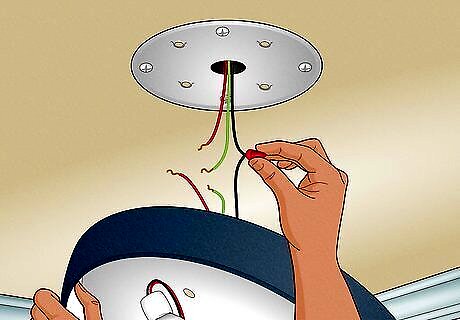
Disengage your light from its wires. You should see plastic caps, called wiring caps (also called a wire nut), with two wires running into each cap. One wire will come from the light, the other from the main electrical circuit of your house. Disengage the wires by twisting the wiring cap until it comes free. Once you have released the light from its wiring, you can set the existing light fixture aside.
Installing Your New Light
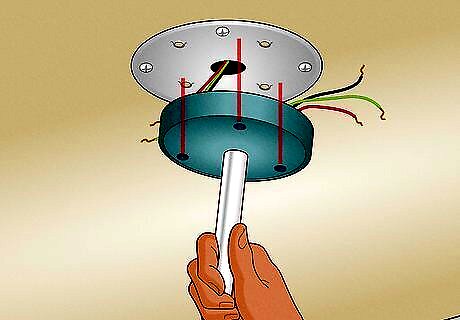
Check for compatibility. In most cases, the mounting hardware for your new fixture will fit the bracket that's already installed.You'll need to hold the new light fixture up to the existing mounting bracket and compare fasteners and size to make sure you don't need to install a new mounting bracket.
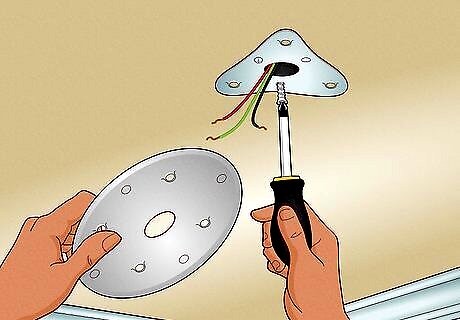
Swap in a new bracket, if necessary. Oftentimes, if a light requires a special bracket, this will be included with the light you have bought. If not, you can look up the light information online by doing a general search of the name of the light fixture, which you can find on the box. Listed with its information should be mounting information as well. Once you know the kind of bracket you need, you can find and purchase it at your local hardware store. Replacing the old bracket is just a matter of unscrewing it and screwing the new one into place.
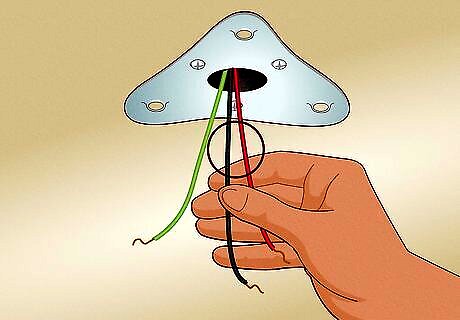
Investigate the age of your wiring. This is especially important if you have an older home, in particular, any home built before 1985. Wiring installed prior to 1985 has weaker insulation than contemporary circuits, meaning the heat generated by your fixture could cause a short, fire, or worse. Fixtures unsafe to use for older wiring will have a warning label that says, “Use wire rated for at least 90 degrees C.” Fixtures without this warning will still be suitable for your pre-1985 wiring.

Join like colored wires. Depending on your country, the colors that code which wires are live, ground, and neutral may differ. In any case, you should support your new light with one hand and take each like colored wire coming from your wall or ceiling and combine it with its mate coming from the light fixture. Twist the exposed ends of the wire together, and seal it by screwing on a wiring cap. A general guide to electrical wiring color code is as follows: CA:Live - black (single phase), red (with a second hot wire)Neutral - whiteEarth/ground - green, green and yellow, or bare copper UK:Live - brown, black, or redNeutral - blueEarth/ground - green and yellow USA:Live - black (single phase), red (with second hot wire)Neutral - whiteEarth/ground - green, green and yellow, or bare copper
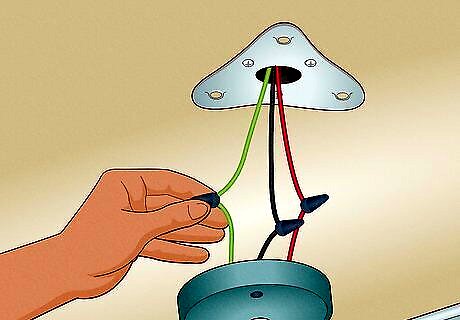
Ground your fixture. If there is a remaining wire that is green, green and yellow, or bare copper, you should screw it into place on the mounting hardware for your light fixture. There will likely be a small screw for this purpose on the fixture, which you can unscrew slightly, slot the wire into the gap between screw and fixture, and then tighten to fasten your ground. Be sure your ground wire feeds to a place it can safely disperse an electrical current. Many metal surfaces can be suitable for this purpose.
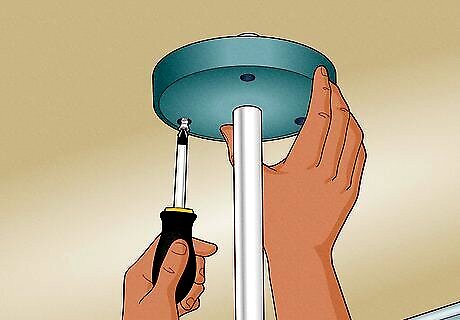
Fasten your fixture in the mounting bracket. Continuing to support your fixture with your hand, hold it in place so as to line up the screw holes with those of the bracket and screw it into the mount using the hardware that came with the fixture.
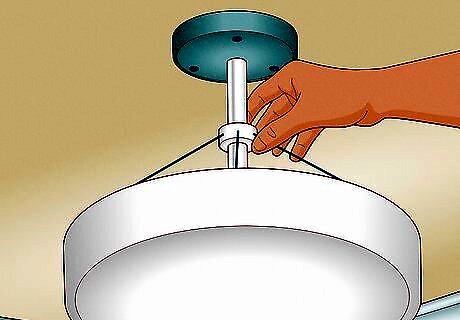
Finish any supplemental installation. There may be external features or parts, like a light cover or ceiling fan blades, to add to your new light fixture. Take a moment to step back and inspect your fixture for levelness, orientation, and flushness with the surface on which you've installed it. Some light fixtures are permanently angled a certain way, and improper installation can lead to your light shining where it does little good.
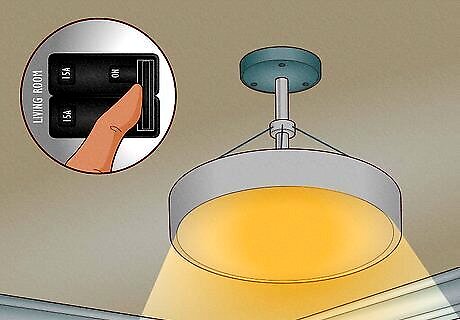
Test your new light. Return to your fuse-box and reset the fuse for the room in which you've been wiring to restore the flow of electricity to the room. Now you can install a light bulb and turn on the new light fixture you have installed to test it out.
Trouble Shooting
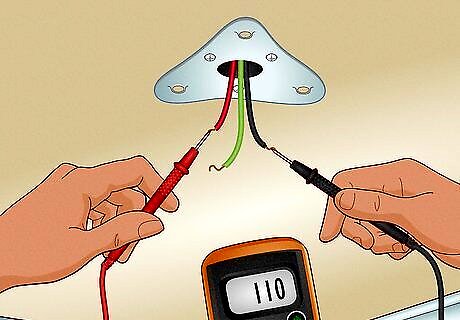
Test for electrical current. Sometimes, over the course of installation, a wire might be jostled or damaged in such a way as to compromise its ability to transmit electricity to your new light. Additionally, in some cases, contractors may have used different colored wires for your electrical setup. In both of these cases you should use a circuit tester to ensure you don't make a dangerous mistake with your wiring. A circuit tester can be purchased at most hardware stores. Turn off the electricity, free the wire you are uncertain about from the old fixture, and then turn the electricity back on, being sure that your free wire is not touching anything dangerous. Your circuit tester will have two nodes; connect one to the questionable wire and the other to a grounded, metal surface or your ground wire. If the light on your tester turns on, the wire is hot and is supplied with electricity.
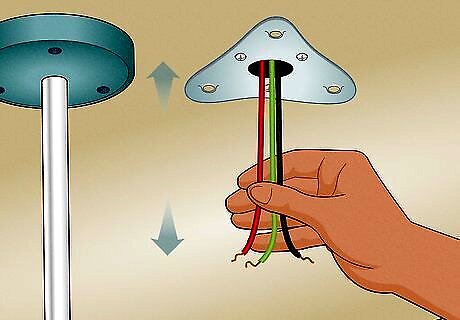
Create space to work. Some wiring jobs are done haphazardly, with poorly managed wire in the fixture box or wall or ceiling where you are working. After turning off the circuit, hold up your fixture to your mount to approximate how much wire you will need. Be sure to leave some excess. Wire can become damaged or get brittle over time, in which case, you might want to strip some insulation off the wire to tie a new fixture in to your circuit.
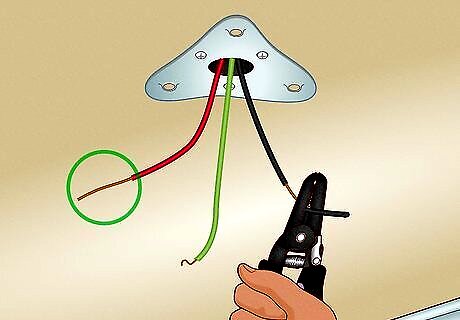
Give yourself more wire. If you are working with older wire, or if the stripped part of the wire is difficult to work with, after you have cut power to the circuit you are working on, you can strip more wire for greater ease of handling. It is recommended that you remove about ½" of wire insulation with a wire stripper or a utility knife. Be sure you exercise care when using a utility knife; you don't want to nick or damage the metal part of your wire.

Give yourself another hand while wiring. If you have a friend of family member available to assist, it can help a great deal to have this person hold the fixture while you're wiring. If you do not have help available, you can bend a piece of unused scrap wire to hang the light securely from the mount. With the fixture secured, you should be able to use both hands, making the wiring portion a cinch. An assistant is especially helpful when you are wiring a ceiling light. While you are on a ladder or chair, your helper can hold you steady, hand you tools and parts, and take unneeded parts from you as you finish.
















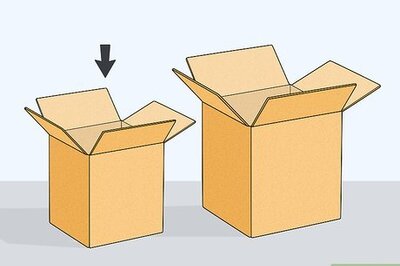

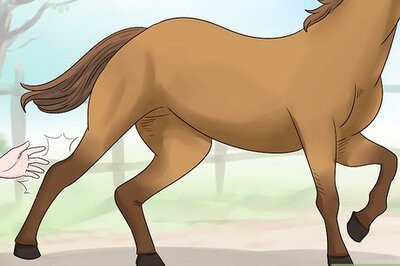
Comments
0 comment